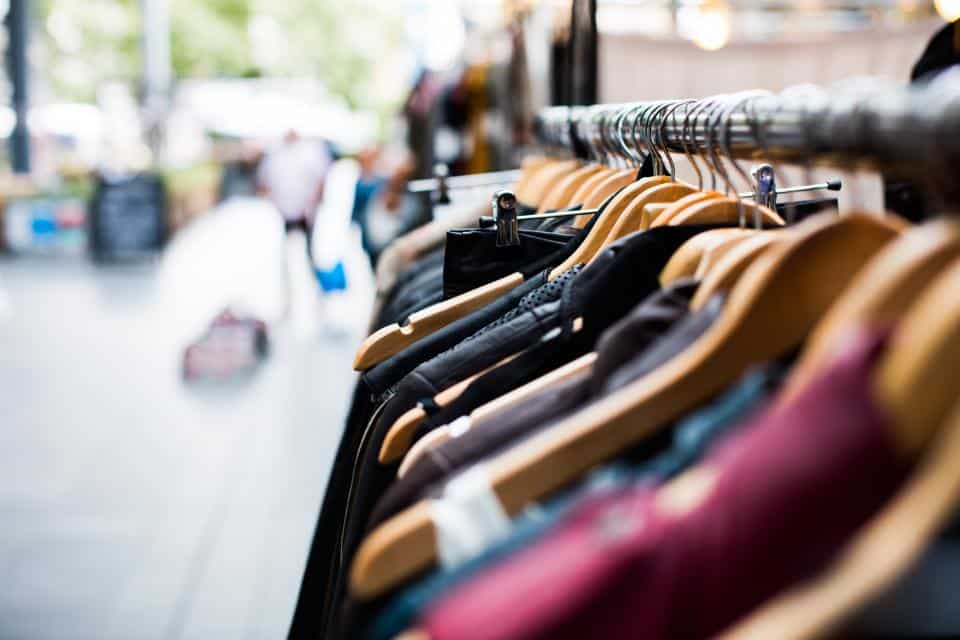The advice given above for retail design is tested and true. They are not the only recommended methods, though. The retail interior design ideas listed below are some cutting-edge approaches to improve customer engagement with your business design.
Experiences with interactive retail
These kinds of interactive retail experiences encourage customers to stay in your store longer. Most interactive retail uses digital technology to connect with your customers, but visual merchandising, like a staged seating area, is one straightforward example.
If you’re into sports stores, you might have noticed interactive displays that let you try out bikes, golf clubs, etc. Similar to Bloomingdale’s, several businesses have embraced the interactive retail trend and are offering cutting-edge changing room experiences employing iPad technology.
Some stores offer touchscreens so that customers may research products, find related items, or create unique color bundles.
Contemporary mobile checkout
In contrast to the decades-long dominance of checkout counters in retail stores, mobile POS systems and card readers are assisting businesses in modernizing their checkout process and accepting payments anywhere in the store.
The last opportunity you have to make a good impression on customers is at the checkout, and how they feel about their experience may determine whether or not they decide to buy at your store again. 4of5 customers say they’d be less likely to shop from that store again if they had a bad checkout experience. And 88 percent of consumers say a negative checkout experience hurts how they perceive a company.
Retailers have come up with a lot of creative ways to streamline and speed up the checkout process. The checkout process should be quick and easy, regardless of whether a customer decides to use Apple Pay, a digital gift card they purchased online, or buy online and pick up in-store (BOPIS).
If you’re debating whether to abandon your tried-and-true checkout counter, think about how changing from that conventional design would affect your customers’ experience. What are the benefits and drawbacks?
On the other hand, if you’re prepared to start looking into accessible ways to modernize your checkout experience, consider how any changes you make might affect how customers move through your retail space and modify the layout of your store to make room for any new services or technologies you introduce.
Studios that create content
When retailers build their stores to serve as areas where customers and influencers may stage and capture material for social media, they are creating content creation studios.
Influencers get free access to stunning studio space that has already been developed, while shops get more exposure for their offerings and storefront.
Are you thinking of designing your retail space to include a content creation studio? By mixing in entertaining, interactive displays with your merchandise, you may make your store a popular destination. Create an environment that makes it practically hard for customers to not take attractive user-generated content.
Don’t forget to instruct your personnel on how to excite and engage your customers (a more fun way to sell, if you ask me).
Members of the neighborhood
Locally handpicked options make for one of my favorite displays to peruse while brick-and-mortar shopping. I value it when shops collect goods that are unique to or supplied by the neighborhood, whether I’m shopping at home or elsewhere.
Think about incorporating local characteristics into your retail design. This not only helps highlight distinctive, possibly high-grossing products, but it also gives your customers—whether they are locals or not—a sense of belonging to the neighborhood.
A focus on simplicity in marketing
Less is often more in the retail world. I already mentioned how using too much color can deter customers from making a purchase. The same is true of displays and merchandise.
Even if you aren’t merchandising every single one of your products, one/two great displays can better engage your buyers.
A modest merchandising strategy might also be effective if you give customers the choice to purchase in-store and have it shipped to their homes. In this situation, your retail layout can serve as both a showroom and a place for customers to interact with your products without worrying about whether you have them in every size and color.
It’s daylight
Natural lighting has a favorable influence on consumer behavior in retail businesses, according to numerous research. Natural lighting can raise the productivity and enjoyment of your retail personnel. In addition to emphasizing the color of your store, enhancing customer behavior, and creating a more comfortable shopping atmosphere. (And, hey, using natural light can save your electricity costs!)
Examine the impact of natural lighting on your retail design. Consider eliminating any displays or racks that obstruct light if your store has windows. Place the checkout area close to the entrance of your shop so that clients can benefit from natural light as they approach the register. Always have a backup plan in place in case of bad weather or late-night shopping.
Less actual spaces
The inability to make a choice is genuine, especially for retail customers. Most people prefer smaller inventories from which to choose their purchases. Thus it might be better for your store design to offer a smaller physical space.
You must, however, have a firm grasp of your inventory management system to accomplish this. As customers swipe up your things, smaller physical locations necessitate a greater backstock and more frequent item restocking. Verify your team’s ability to handle more frequent replenishing.
You might even provide “endless aisles,” where customers can purchase in-store but have their purchases delivered right to their homes. With this choice, you can offer more options for purchases without having to physically show everything.
Read more on INJ Architects:
